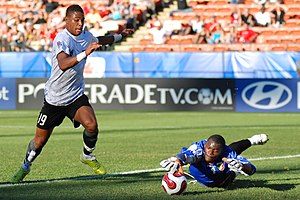The typical week of a soccer player during the competitive season includes a period for training, a taper, the competitive match and recovery from it. This weekly cycle is often disrupted by an irregular schedule of games, match day being not necessarily the same from one week to another. Players in the top professional clubs may have extra commitments such as cup and other knock-out matches, competing in continental leagues or representing their country in international matches. University players may have fixtures for their institution in mid-week and for their club at weekends. The unrelenting fixture schedule, the hassle and stress of travel increase the risk of experiencing ‘burn-out’ whereby players lose ‘form’ and enter an under-performance spiral. When matches are too frequent, there is insufficient time between them for real training to take place.
A relentless grind of matches can place enormous strain on players and so they are unlikely to be at their best in all matches. During the Christmas–New Year period of 2005–2006, teams in the English Premier League played four games in eight days so that the season would be completed one week earlier than usual and allow the national team a longer period of preparation for the World Cup. Some national leagues in Europe contain a mid-season intermission; this period offers a respite to those who are in the first team squad. The argument for the break is that it enables players to recover from the first half of the season and its scheduling coincides with the time when climatic conditions in Europe are usually at their worst. The richest clubs in the European leagues tend to have the largest squads, allowing some scope for ‘squad rotation’ and allowing certain players to have an occasional break. In 2004 the lowly fancied Greek team without any individual stars won the European nations championship, defeating teams composed of players from among the top clubs that have arduous schedules towards the end of the domestic League season. The World Cup finals in Korea and Japan took place shortly after the completion of the 2002 domestic league season on the European continent. In a study of factors causing an apparent ‘ under performance’ of teams in this tournament, it was concluded that it was the congestion of fixtures towards the end of the professional League season followed by a short period before mid-season international tournaments that caused some players to under perform in those latter competitions.
Certain players can now be used sparingly in a game by the coach, with substitutions based on tactical grounds so that key individuals are not exhausted at the end of the match. The rules of play allow three players to be replaced during the game, but the majority are obliged to compete for the full 90-min duration. Rule changes in the 1990s, an increased emphasis on fitness training and on a high work rate have contributed to a high tempo of match-play.The outcome is that competitive engagements take participants to the verge of exhaustion, from which they must recover quickly to be prepared for the next game. When competitive fixtures are congested, the recovery process should be optimized and some of the strategies for doing so are considered in this review.
Ensuring recovery between matches
Playing a competitive soccer game places all of the body’s major organs and systems under some measure of stress. The renal system is spared, blood flow to the kidneys being reduced during exercise and being shunted to serve the more urgent needs of active skeletal muscles and requirements for thermoregulation. The main physiological systems engaged include energy systems (liver and muscle glycogen, free fatty acids and muscle triglycerides), the musculo skeletal system, the cardiovascular, endocrine and nervous systems. Players are often near to exhaustion at the end of a game, being low in glycogen depots in their liver and skeletal muscles. They may also feel mentally drained of their ‘nervous energy’, even though subjective states are often mediated by the outcome of the match. Various factors influence the rate of recovery between games, particularly when matches are scheduled twice in one week.
Methods for hastening the recovery process include warm-down, replacement of fluid lost and restoration of energy levels. Active and passive means of intervention to accelerate the recovery process are also relevant. The immune system can be compromised by competitive stress: whether it is possible to boost the body’s resistance to infection or damage is also briefly addressed.
Ensuring recovery between matches
Playing a competitive soccer game places all of the body’s major organs and systems under some measure of stress. The renal system is spared, blood flow to the kidneys being reduced during exercise and being shunted to serve the more urgent needs of active skeletal muscles and requirements for thermoregulation. The main physiological systems engaged include energy systems (liver and muscle glycogen, free fatty acids and muscle triglycerides), the musculo skeletal system, the cardiovascular, endocrine and nervous systems. Players are often near to exhaustion at the end of a game, being low in glycogen depots in their liver and skeletal muscles. They may also feel mentally drained of their ‘nervous energy’, even though subjective states are often mediated by the outcome of the match. Various factors influence the rate of recovery between games, particularly when matches are scheduled twice in one week.




No comments:
Post a Comment